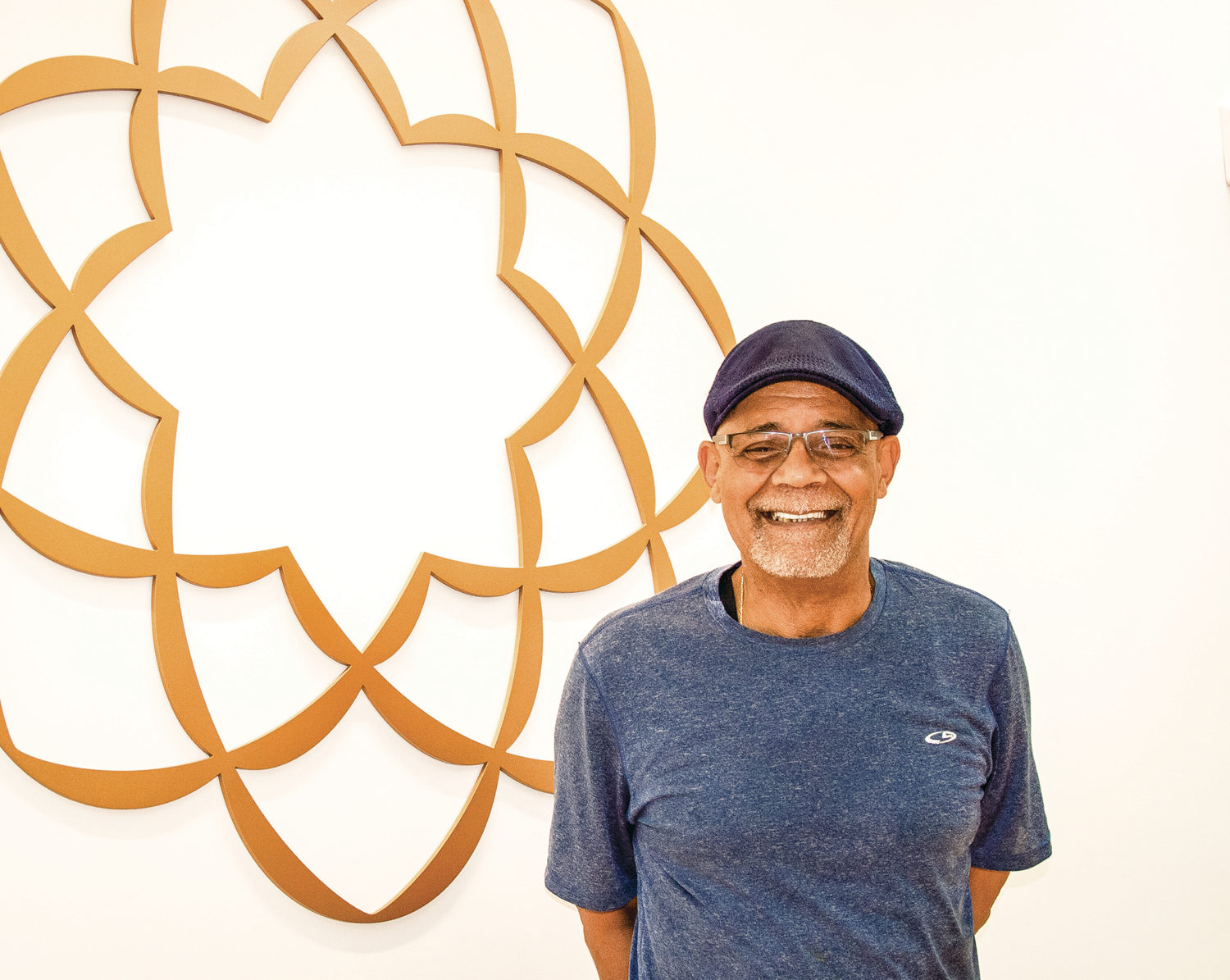Daisaku Ikeda was 19 years old when he attended his first Soka Gakkai discussion meeting on August 14, 1947. His friend invited him to the meeting, explaining that they would discuss life philosophy. It was there that he first encountered his lifelong mentor, second Soka Gakkai President Josei Toda. He was earnestly searching for a sound life philosophy and a mentor to guide him. Moved by Mr. Toda’s straightforward and honest responses, Daisaku Ikeda decided to join the Soka Gakkai on August 24.
Buddhism teaches that one cannot truly become happy if those around them are suffering. Therefore, the bodhisattva practice is an essential part of our own enlightenment. August is a time when we reaffirm that vow to propagate this Buddhism for the peace of the land.
An Eternally Youthful Spirit Through Propagation
In volume 25 of The New Human Revolution, Shin’ichi Yamamoto speaks to pioneering members of the organization and encourages them to continue to actively engage in propagation efforts, saying that “an organization whose pioneering members remain active and energetic will continue to develop” (p. 37).
He further shares with the group: “Having stepped down from your position on the front lines, you’re at a very important point in your life. You mustn’t think ‘I’ve completed my mission, and now I can just relax and enjoy myself.’ If you do, your faith will begin to crumble. Your struggle is just beginning.
“Recently I asked a prefecture guidance leader, ‘In the last seven years, how many people have you introduced to Buddhism?’ He had previously introduced Nichiren Buddhism to several hundred people. ‘These last seven years, I haven’t been able to introduce anyone,’ he said.
“I said to him, ‘Let’s once again strive with the pioneering spirit of the early days. It’s vital to continue advancing and encouraging others as long as you live, whether you’re in your eighties or nineties. Please live your life with an eternally youthful spirit’ ” (NHR-25, 38).
This month, Living Buddhism interviewed members of the Many Treasures Group, composed of members 65 years and older, about the spirit to share this Buddhism with others and the heart to vigorously advance with the shared commitment of mentor and disciple. We asked them: “What motivates you to introduce others to Buddhism?”
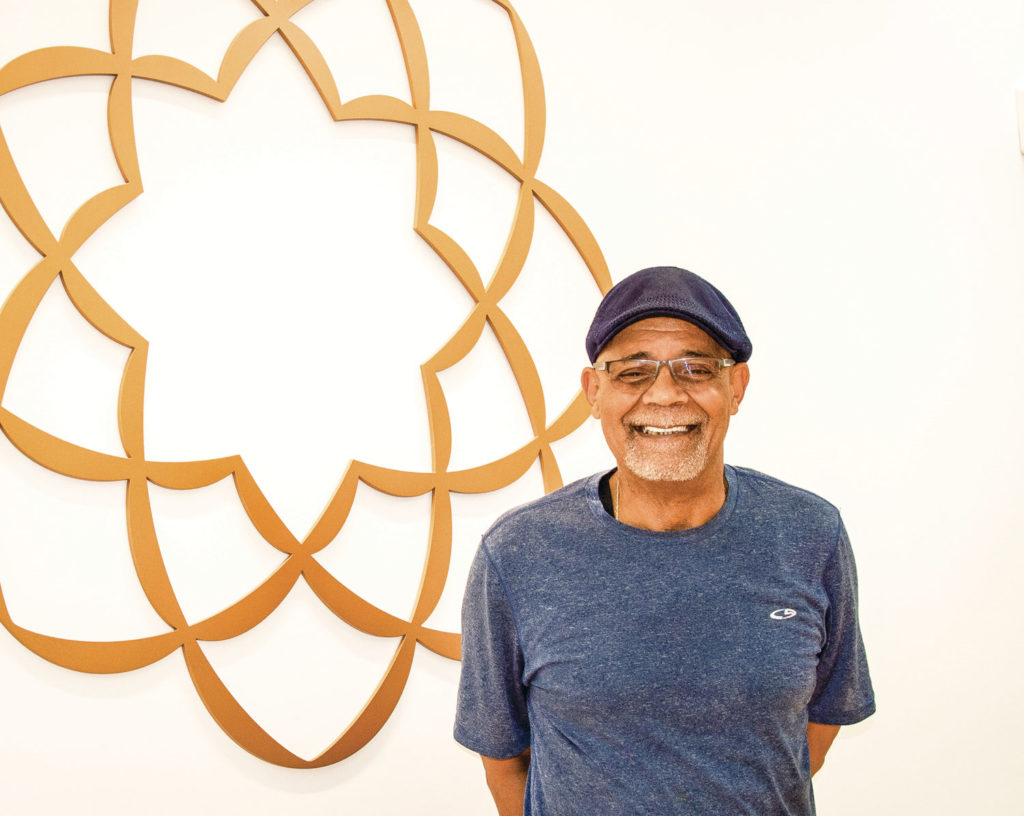
A Spirit of Challenge
by Jim Hill
Boston
Age: 76
Length of practice: 42 years
I encountered Nichiren Buddhism while I was in a drug rehabilitation program. My roommate received the Gohonzon, and I started chanting Nam-myoho-renge-kyo with him. He would leave his SGI publications lying around, and my first exposure to SGI President Ikeda was through reading the serialized dialogue “Choose Life” in the World Tribune. I resonated with what President Ikeda was saying in his dialogue with Arnold Toynbee.
That was 42 years ago. Today, my spirit of challenge and resolve to win in the morning are crucial to staying vibrant and young in faith. I chant two hours every morning, and that’s what gives me the energy to keep going! I do my best to live by this quote from second Soka Gakkai President Josei Toda: “Live your life and forge your faith in such a way that you can meet death with dignity and composure whenever it should come” (January 2018 Living Buddhism, p. 20).
In May of this year, I was on my way to a home visit when I got hit by a car. I later called the young woman who was driving the other car to invite her to an SGI meeting. She responded by saying, “I love Buddhism!” She received the Gohonzon a couple weeks later. I told her that we got into the accident so that I could introduce her to Buddhism. I learned this spirit to share Buddhism with others in the beginning of my practice. Like chanting Nam-myoho-renge-kyo, doing shakubuku was taught as the essence of faith. In 2016, within a two-month period, I helped five people receive the Gohonzon! And last year, toward the 50,000 Lions of Justice Festival, I helped one youth receive the Gohonzon.
Sharing Buddhism is natural for me now. I encourage the young people at work to have a vision for their life, and I share President Ikeda’s quotes to uplift their spirits. I share this Buddhism with people because it might save their life.
For those who might be having a hard time sharing this practice, I would say JUST DO IT! To broaden Sensei’s tireless efforts and continue to advance the kosen-rufu movement, we have to help other people become happy. Practically speaking, that means chanting with the spirit, How can I support this person’s happiness? Chanting for people’s happiness allows us to naturally encourage them.
I had a “squad of 10” for the 50K Festival! I received so much benefit including a new house and a harmonious family. Toward the July Youth Discussion Meetings, I made a determination to invite 100 people and pray for them to become absolutely happy. I use every campaign as a way to continually challenge some aspect in my life and see great actual proof. This is how I have remained youthful at heart.
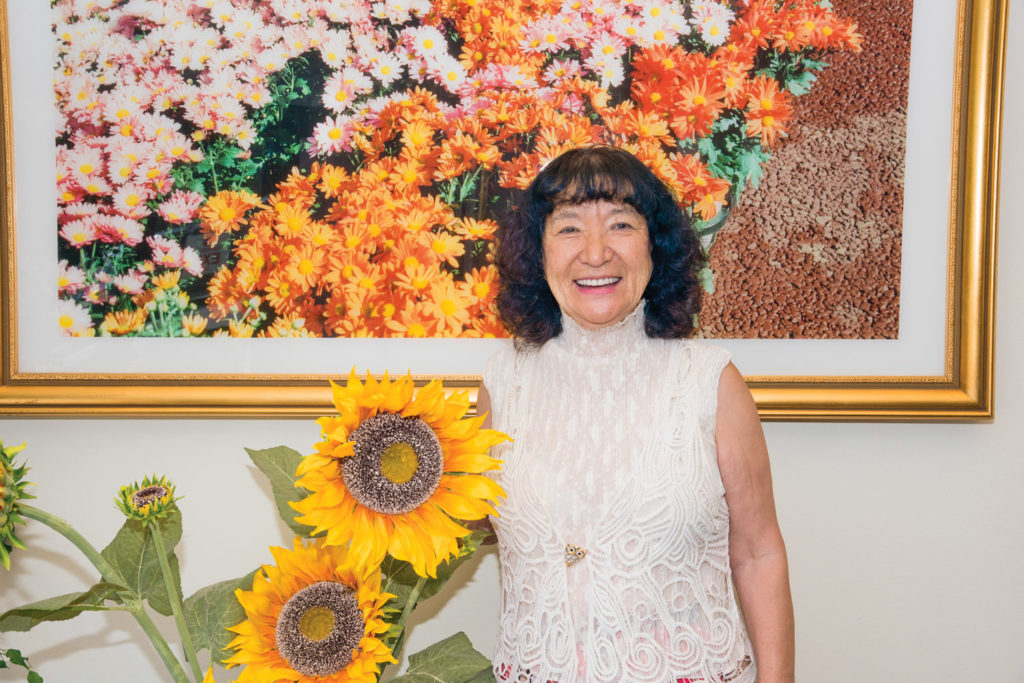
I Am Happy!
by Huipok Blount
Denver
Age: 70
Length of practice: 40 years
One day while I was looking for my friend’s house, I knocked on the wrong door and the woman who answered invited me inside to chant Nam-myoho-renge-kyo. This was in Korea in 1976. I chanted for five minutes and felt so good that when I left, I immediately started telling others about it!
In 1979, I married an American man and moved to the United States. That same year, I received the Gohonzon. I have built so much fortune as a result of my practice. Whenever I need something, it is always there.
After 40 years of practice, I have not forgotten my spirit to share this Buddhism with others. I start by chanting two hours every morning, praying to the Gohonzon that I can meet someone with whom I can share this Buddhism, and then I go out and meet people! My greatest fortune is that I live in an area where I am surrounded by young people.
Every day, I plant many seeds regardless of the reaction I get. I simply ask people whether they are interested in Buddhism and if they say yes, I invite them to a meeting. I enjoy talking to others, carrying out conversations and introducing others to Buddhism. In 2009, I helped 23 people receive the Gohonzon! Last year, toward the 50,000 Lions of Justice Festival, I helped a 23-year-old young man start practicing. He was so excited that he told his friend, who also joined, and they shared with their other friend, who also started practicing. They are all active in the organization. I feel a great sense of responsibility to take care of everyone I introduce, and I often have them come over to chant or we go out to eat. In that way, I keep a friendship with them. So far this year, I have helped three people receive the Gohonzon.
Although I am 70 years old, I don’t feel like it! I still go to SGI activities, and I’m active in my daily life, meeting new people every day. I enjoy my life and can confidently say that I am happy!
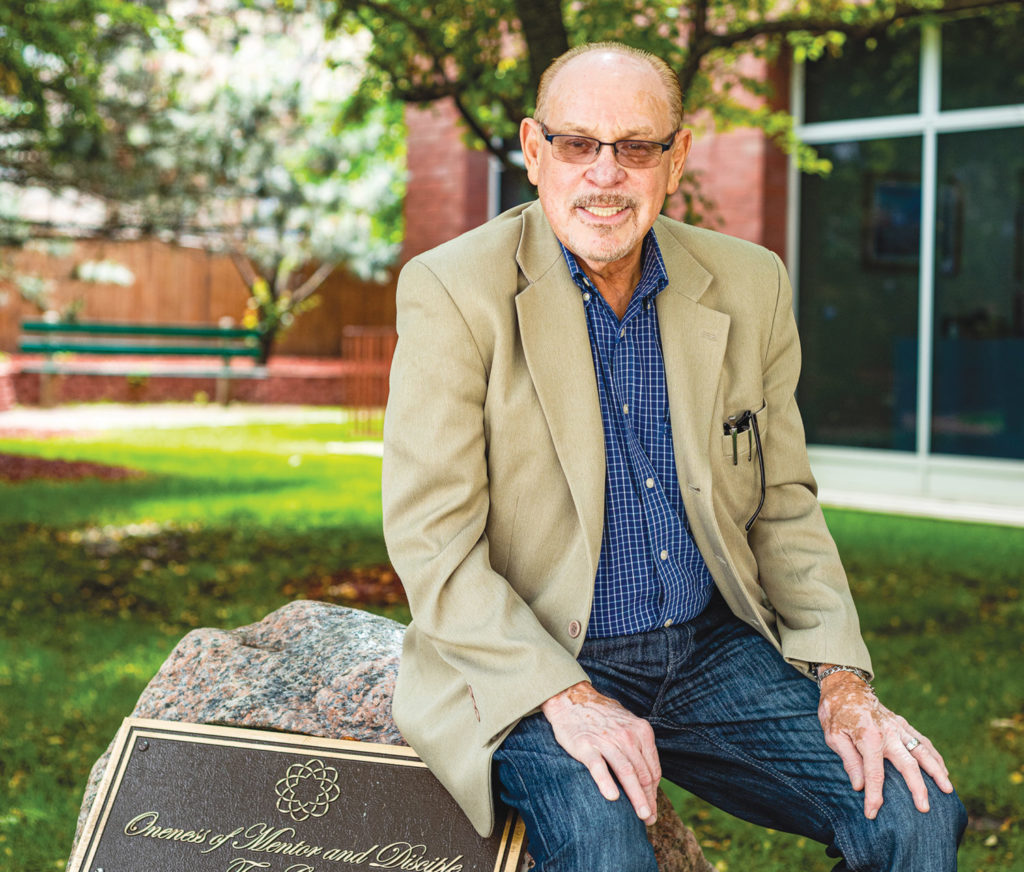
“Every Day, I Chant to Do Shakubuku”
by Ibrahim Nodarse
Chicago
Age: 79
Length of practice: 31 year
I’m 79 years old, but I have so much energy because I do shakubuku, support my district and do SGI activities! I’m originally from Cuba, but moved to Chicago in 1968. A young Cuban girl introduced me to the practice and invited me to meetings 10 times before I said yes. When I went to my first meeting 31 years ago, I knew I had found what I was looking for and have been practicing ever since. My first benefit was that I stopped using drugs within one week of chanting.
In the beginning of my practice, my seniors in faith encouraged me to read The Human Revolution. Reading The Human Revolution and The New Human Revolution is how I learned the spirit of propagation, and it has changed my life completely. SGI President Ikeda became my mentor through reading these novels. We don’t have to meet the mentor to have the spirit of the mentor. We can understand his spirit through taking action based on his guidance. I know that President Ikeda is my mentor, because he is the only person in my life whose guidance I have followed for 31 years. I have a deep sense of gratitude toward Sensei because he spread Buddhism to America. Without him, I would never have encountered this practice and changed my life.
Sensei says: “Some of you may feel you couldn’t possibly introduce others to the Daishonin’s Buddhism and successfully have them start practicing. That’s OK. Even in Soka Gakkai President Tsunesaburo Makiguchi’s and President Josei Toda’s day, the Soka Gakkai never once pleaded with its members to introduce Buddhism to others. The Daishonin promises that if we teach the True Law to others, we can change our destiny and attain Buddhahood. We therefore undertake propagation activities to transform our own destiny and become happy. Such efforts also contribute to our friends’ happiness and to a peaceful and prosperous society. No task is more sublime or sacred” (The New Human Revolution, revised edition, vol. 2, p. 251).
In the course of my practice, I have introduced thousands of people to Nam-myoho-renge-kyo. Over 50 of them have received the Gohonzon and started practicing as members of the SGI! Every day, I chant to do shakubuku, and when I do, I meet people who share that this is what they have been looking for! I carry Nam-myoho-renge-kyo cards and The Winning Life in both English and Spanish everywhere I go. This year, I have been telling five people each day about the practice, and my determination is to help two people receive the Gohonzon so that they can become absolutely happy!
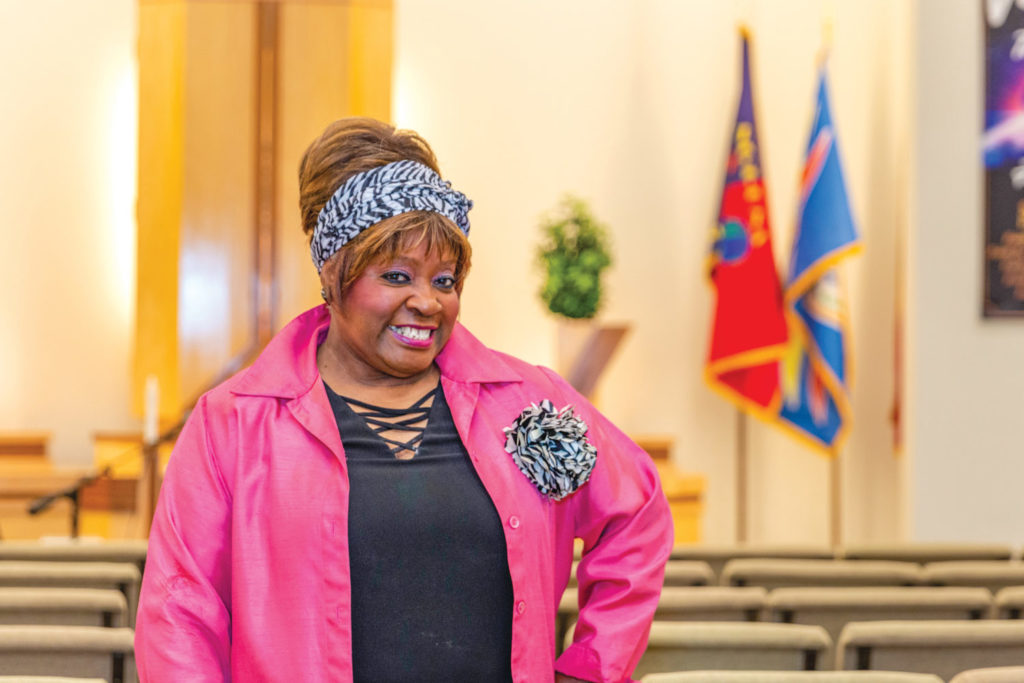
Shining Like a Diamond
by Bernice Griffin
Lakewood, Washington
Age: 71
Length of practice: 36 years
I was a 35-year-old single parent, raising four children on my own when I encountered Buddhism. I was working two jobs and trying to make ends meet. I felt like I was on a treadmill, going fast, but going nowhere. A young woman at my work befriended me and invited me to a meeting. I joined immediately.
Soon after becoming an SGI member, the pioneer women taught me that chanting Nam-myoho-renge-kyo and doing shakubuku were the quickest ways to transform my karma. Seven days a week, I would go with them to do shakubuku. This is how I learned how to introduce others to Buddhism.
As a result, my life is nothing like it used to be. I’ve overcome an incurable lung disease, had amazing career opportunities that transformed my financial karma, and all 25 of my grandchildren are SGI members.
For me, the keys to staying young in faith are: 1) centering on the mentor-and-disciple relationship and always striving to follow SGI President Ikeda’s guidance; 2) the three Ps: prayer, propagation and perseverance. I pray every day to be able to fulfill my vow and Sensei’s expectations, and become a magnet for those who are seeking this Buddhism.
If you feel too shy to share your practice with others, set a goal for yourself and pray sincerely to touch somebody’s life and never give up. I make a personal goal every year to introduce someone to the practice. Last year, I helped a couple receive the Gohonzon and just the other day, my grandson’s friend told me he wanted to become Buddhist.
We’ve only got this time with Sensei. Every moment is so important to make a difference in the lives of others. I ask myself each day how I can shine like a diamond and shine the light for others.
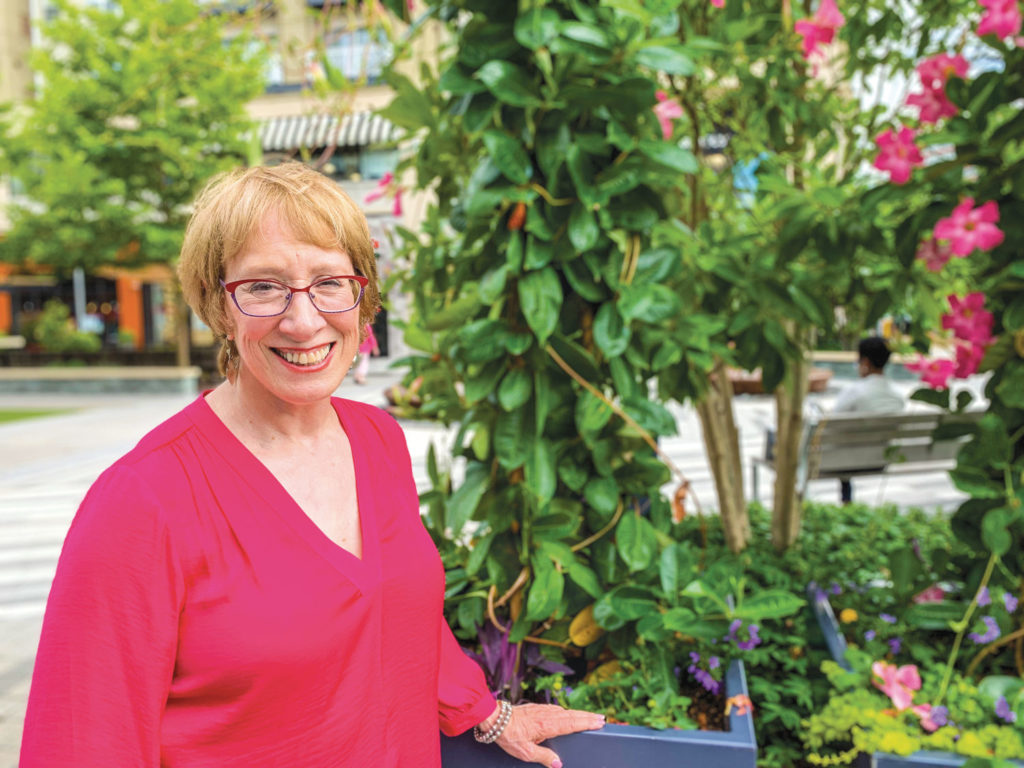
“I Owe Everything to the Gohonzon and Sensei!”
by Jo Reed
Virginia
Age: 71
Length of practice: 43 years
At my first SGI meeting, I thought it was so weird that I would never come back. The man who invited me told me confidently that I would encounter this Buddhism again and that within seven years I would be practicing. I thought, What a bizarre and arrogant thing to say!
Over the next seven years, I repeatedly encountered Nam-myoho-renge-kyo, but was resistant to join any religion. However, due to a series of events, I started chanting and received the Gohonzon on April 4, 1976. Because of my own experience, I know that when I introduce others to this practice, regardless of their reaction, they will practice one day.
My seniors in faith taught me that sharing this Buddhism was the quickest way to transform my karma. When I was a youth, I had just gone through a painful break up with a co-worker. During my lunch, I would go to a nearby street where there was a concession area and share this Buddhism with whomever was the concession attendant that day. I had zero concern for the person’s happiness, but my life was lifted every time I went out to share Buddhism. It was the only thing that relieved the pain of the breakup. Years later, a young man came up to me at a meeting and said that I had introduced him at the concession and thanked me for doing so because it had changed his life. What I learned through that experience is that even if you have no compassion for the other person, you will immediately experience the benefit of introducing others to Buddhism and eventually their lives will blossom as well.
Now I talk to others about Buddhism because I genuinely care for their lives. Just as the line from the 16th chapter of the Lotus Sutra states: “At all times I think to myself: How can I cause living beings to gain entry into the unsurpassed way and quickly acquire the body of a Buddha?” (The Lotus Sutra and Its Opening and Closing Sutras, p. 273).
I pay attention to the people in my environment. I listen to folks I meet and ask questions about their jobs, their families, what their dreams are and what they’re struggling with. Often there is a way to link those struggles and dreams with the Buddhist perspective and practice. This is how I was able to support three people to receive the Gohonzon last year.
There is so much suffering in the world. Large numbers of people chanting Nam-myoho-renge-kyo and doing their human revolution is the only enduring solution. Recently, it dawned on me that consistently paying attention to others, engaging them in conversation, learning to care about their lives, sharing with them the profound philosophy of Nichiren Buddhism—is kosen-rufu itself.
My life has completely changed since 1976. Growing up, my father had a drinking problem and was violent. My older sister had epilepsy, and my younger sister and I struggled with depression. I was able to shakubuku all of them and, together, we completely transformed our unhappy family into one of harmony. My sisters continue to practice together with their spouses, and my father, before he passed away at 92, became happy. I owe everything to the Gohonzon and to Sensei. To repay my debt of gratitude, I am determined to introduce six people this year!
You are reading {{ meterCount }} of {{ meterMax }} free premium articles

